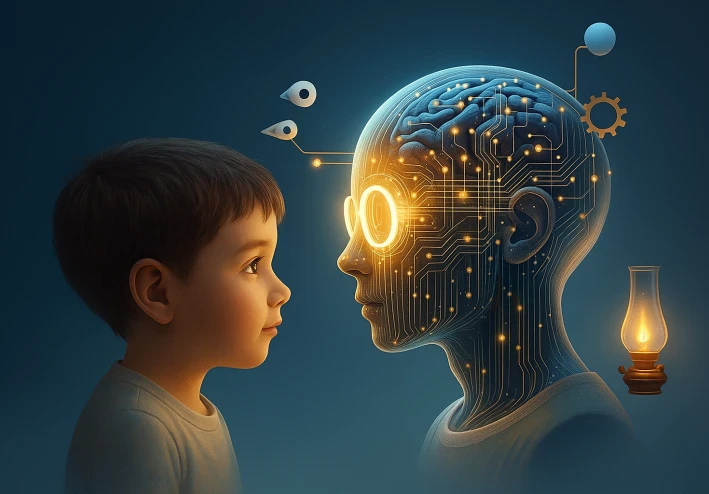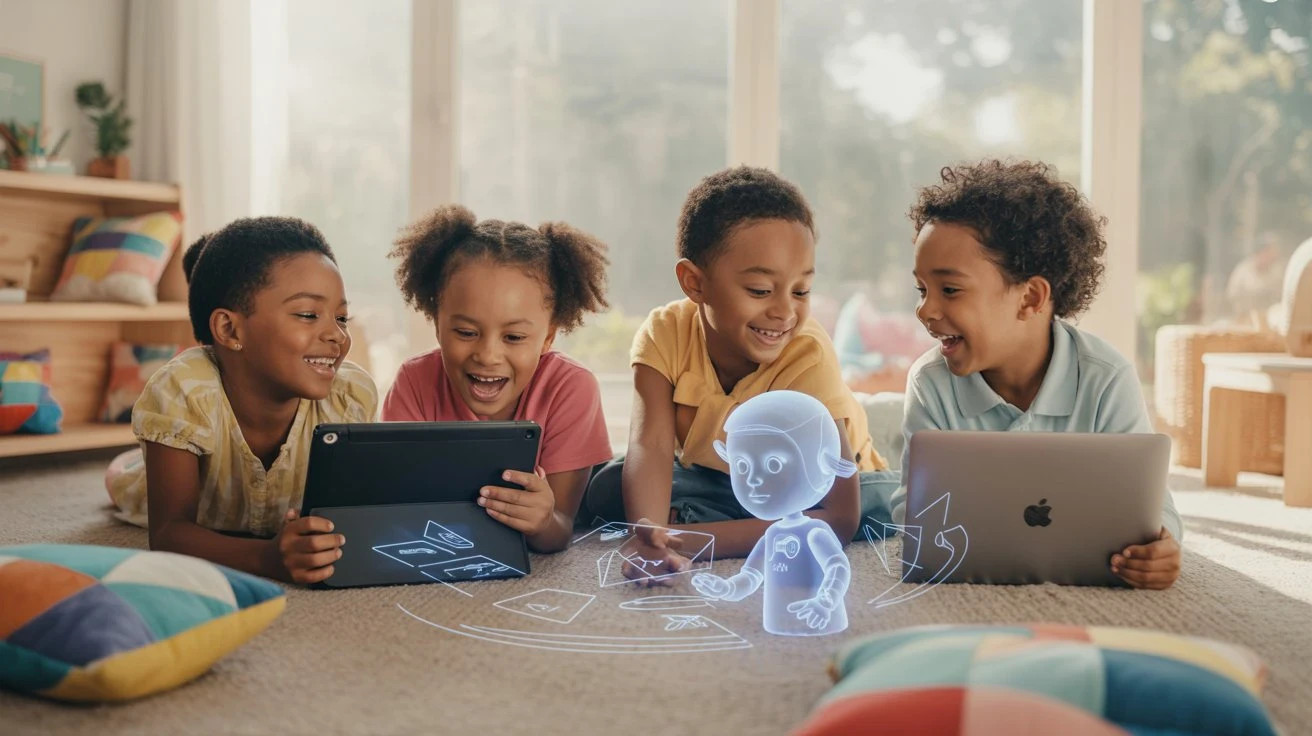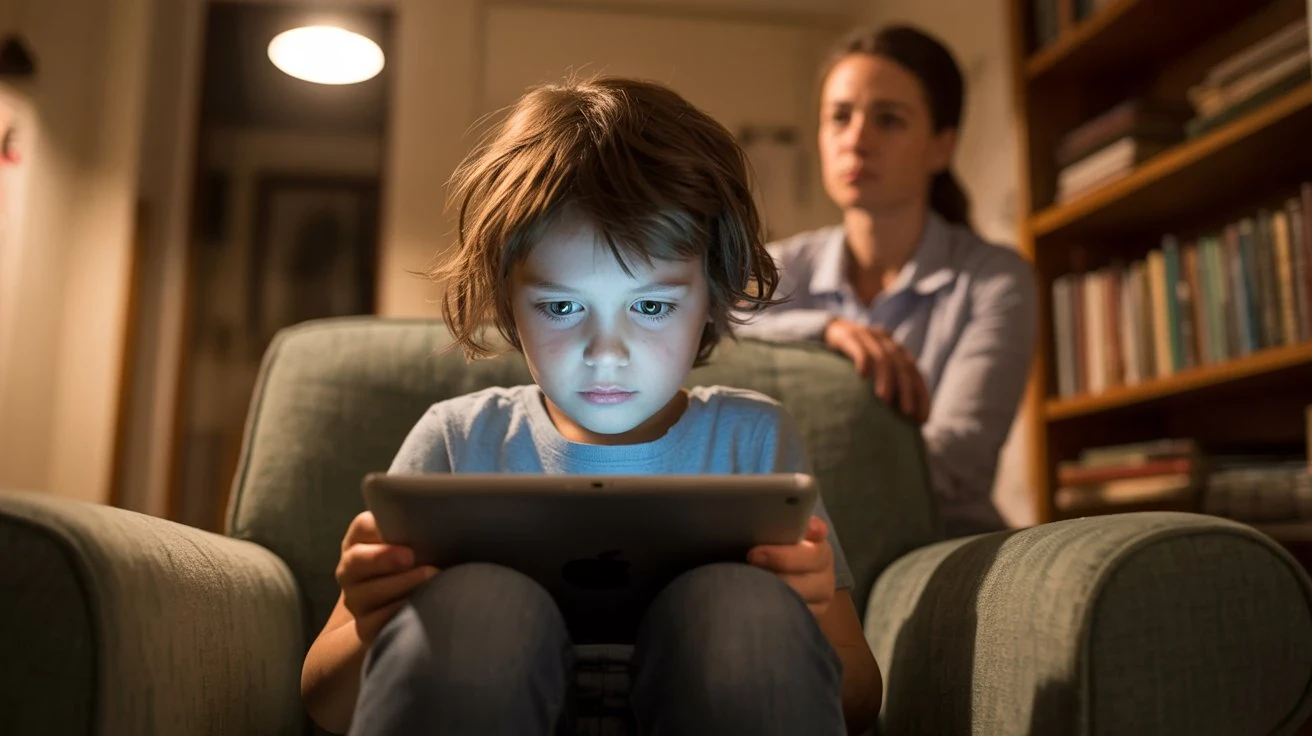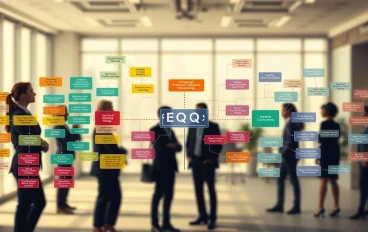
AI and Children: A Helpful Ally or a Hidden Risk?
Introduction: A New Generation Growing Up with AI
Imagine a child learning to read with the help of a talking app, or asking an AI assistant about space or dinosaurs. For today’s kids, artificial intelligence isn’t science fiction — it’s part of everyday life.
But is this new digital companion truly beneficial for children? Or could it be quietly reshaping their minds, habits, and social lives in ways we don’t fully understand?
Let’s explore the real benefits and hidden dangers of AI for children — and how parents and educators can make the most of it, safely.
The Bright Side: How AI Can Help Children Thrive

Personalized learning made possible
AI tools can adapt lessons to match each child’s learning speed, strengths, and weaknesses. Whether it’s solving math problems or learning new languages, AI can give kids a learning experience that feels tailor-made just for them.
Support for children with special needs
Speech recognition, visual aids, and interactive learning tools powered by AI can empower children with disabilities. It helps them communicate, learn, and feel included — often in ways that traditional tools cannot.
Creative expression and exploration
AI can co-create with children — generating stories, drawings, music, or games based on their ideas. It encourages imagination and can be a fantastic spark for curiosity.
Early tech literacy for the future
Understanding how AI works — even on a basic level — prepares kids for the digital world they’ll live and work in. It’s a head start on tomorrow’s essential skills.
The Dark Side: The Hidden Risks Parents Must Know

Addiction and social disconnection
Too much screen time and interaction with AI can lead to dependence. If kids spend more time with devices than people, their real-world communication and emotional skills might suffer.
Privacy concerns
Many AI-powered apps collect personal data — even from children. Parents often don’t know what’s being tracked, stored, or shared.
Inappropriate content exposure
Even smart systems can make poor recommendations. Kids might stumble on violent, scary, or misleading content unless tools are carefully monitored.
Over-reliance on AI “answers”
Children may begin to believe AI is always right — which weakens critical thinking. They may forget how to ask questions, doubt, or learn through mistakes.
? Finding the Balance: What Can Parents and Educators Do

1. Be present and engaged
No app can replace your voice, attention, or love. Spend time with your child when they use technology, and talk about what they’re doing or learning.
2. Choose wisely
Not all apps are created equal. Look for educational tools with strong reviews, privacy protection, and age-appropriate content.
3. Set boundaries
Limit screen time. Balance AI use with real-world play, reading, face-to-face conversations, and time in nature.
4. Teach digital thinking
Encourage your child to ask questions about what AI tells them. Help them understand that not everything generated by AI is correct — or safe.
Conclusion: AI Is a Tool, Not a Substitute for Parenting
Artificial intelligence is neither a miracle nor a monster. It’s a tool — powerful, evolving, and full of potential.
In the hands of aware parents and educators, it can enrich a child’s development.
Left unchecked, it can quietly reshape their world in ways we never intended.
The key? Guide, don’t replace. Teach, don’t assume. Watch, don’t ignore.
With thoughtful use, AI can become a friend to your child — not a silent threat.






































